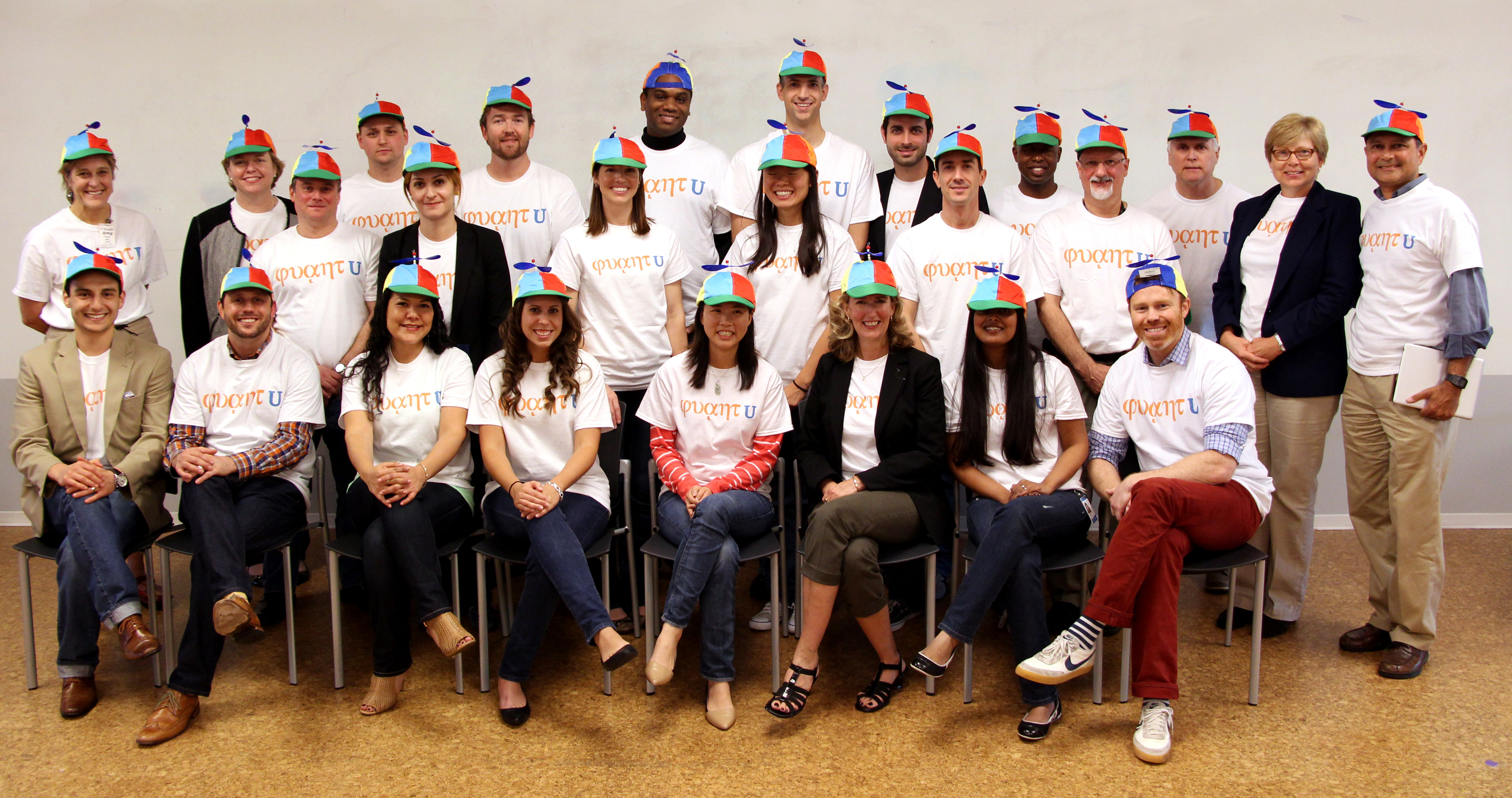SMU Cox professors teach “Quant U” at AT&T
AT&T Partner Exchange and the Cox School developed a business analytics program called Quant U.

DALLAS (SMU) - Today’s knowledge-based economy demands effective use of business analytics. With that understanding, Dallas-based AT&T made it a priority last fall to help employees in its new AT&T Partner Exchange group learn to optimize their use of business analytics. The start-up team offers business-to-business communications solutions.
To keep employees on the cutting-edge of business skills, AT&T Partner Exchange collaborated with the SMU Cox School of Business to develop a 10-week program called Quant U. |
“A lot of what we do here is around building new skill sets and building the culture and skill sets that will lead our workforce and our company into 2020 and beyond,” says David Daines (SMU Cox PMBA ’13, MSE ‘12), AT&T director of strategic pricing. “My boss challenged me to figure out a way to increase the level and awareness of quantitative methods across the group.”
Daines and fellow AT&T employee and Cox alum, Lyndsey Aldridge (SMU Cox MBA ’07, BBA ‘02), researched various business analytics education options, including Information Technology and Operations Management (ITOM) at SMU Cox. Much of what AT&T was looking for was already being taught in the Cox Graduate Business Analytics Certificate Program, according to Amit Basu, Cox ITOM Department Chair and Carr P. Collins Chair in Management Information Systems. The GBACP was established 10 years ago to enable business managers and analysts to access information from corporate databases and data warehouses and build a broad range of models for decision-making.
“I told them we could modify our existing GBACP to meet their needs,” says Professor Basu. “We shortened the program into a 10-week course and taught the students on site at the AT&T Foundry in Plano. From a teaching perspective, it was a unique opportunity because everyone in the class was working for the same company and if they didn’t already know each other, at least they were all part of the same environment, familiar with the company’s culture, priorities and challenges.”
AT&T dubbed the on-site analytics course “Quant U.” The course aligned with the company’s core value of promoting Science, Technology, Engineering and Math (STEM) education. Team leaders nominated high performers from a variety of departments with jobs that have a quantitative focus. Twenty managers and directors were chosen to take part in the program, taught on Tuesday and Thursday evenings.
Dawn Malik, director of Project Management and Process Management, was interested in “Quant U” because of the decision-making that comes with being part of a start-up team. At the time, she was director of product development.
“I felt it was best to base decisions about products on data versus conjecture or simply my opinion,” Malik says. “I wanted facts to base my decisions on to make sure the decisions were sustainable and viable for the business model we are putting together. Going into Quant U, I wasn’t sure I could do it, but it wasn’t intimidating. The professors gave us the tools to do it and it was a great experience for me.”
Gary Gadson was the director of financial operations when he entered “Quant U” and was moved to a new role as director of API Ecosystem (application programming interface) afterward to help effect change in that area.
“I wanted to be data-driven in my decision-making and I wanted to be better at representing business using analytics,” Gadson says. As a result of what he learned, his new team incorporated some algorithms to simplify their work, increased random sampling and, according to Gadson, “became more effective than we otherwise would have been.”
Maher Saab, senior account manager, believes “Quant U” helped him hone skills that now allow him to be less reactive and more proactive. “I can look at a problem forward and backward and look for patterns using different data mining tools, seeking intelligent answers of causation or correlation,” Saab says.
|
|
“Quant U” culminated with a capstone project in which the students were divided into four teams. Each group was given a case study of a real internal situation and was challenged to create and present a potential solution using their newly-acquired analytics skills. Three of the five Cox professors who taught the program helped AT&T executives judge the capstone presentations and selected what they deemed to be the most viable proposal. Some of the recommendations from the winning proposal have since been implemented.
“Each team worked as a cohesive group,” says Professor Basu. “They interacted and came together as problem-solvers. From an academic perspective, as well as a business analytics perspective, their teamwork and their outcomes were impressive.”
According to Daines, AT&T is assessing the idea of repeating the “Quant U” program in the future. Meanwhile, demand continues to grow for business analytics programs. The SMU Cox GBACP, offered only one semester a year beginning 10 years ago, is now offered every fall and every spring, typically with enrollment at full capacity. In addition, Cox added the nine-month Master of Science in Business Analytics (MSBA) to its degree offerings in 2014. The first cohort will graduate this May.
# # #
